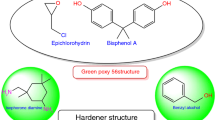Abstract
The main goal of this research was to study how enzymatic treatment of hemp and flax fibres affects their utilization as reinforcement in polypropylene composites. Enzymes are environmentally benign, can be reused, and require mild operating conditions. The central hypothesis of this study is that the removal of hemicellulose and pectic fractions would reduce surface polarity resulting in fibres better suited for thermoplastic owing the reduction of hydroxyl groups distributed on the fibres surface. As a result, hemicellulases, pectinases, and a laccase were investigated. The removal of hemicellulose and pectic components using xylanase (with and without cellulase) and polygalacturonase, respectively, resulted in improved thermal properties and water resistance. The removal of up to 25 % (wt) of natural fibre did not significantly compromise the mechanical properties of the composite materials. This environmentally benign approach could be tailored to pretreat other feedstocks and optimized to cleave a specific amount of fibres for different composite applications.





Similar content being viewed by others
References
Mohanty AK, Misra M, Hinrichsen G (2000) Biofibres, biodegradable polymers and biocomposites: an overview. Macromol Mater Eng 276:1–24
Herrera-Franco PJ, Valadez-González A (2005) A study of the mechanical properties of short natural-fiber reinforced composites. Compos B Eng 36:597–608
Goda K, Sreekala MS, Gomes A, Kaji T, Ohgi J (2006) Improvement of plant based natural fibers for toughening green composites—effect of load application during mercerization of ramie fibers. Compos A Appl Sci Manuf 37:2213–2220
Kim JT, Netravali AN (2010) Mercerization of sisal fibers: effect of tension on mechanical properties of sisal fiber and fiber-reinforced composites. Compos A Appl Sci Manuf 41:1245–1252
Khalil HPSA, Ismail H, Rozman HD, Ahmad MN (2001) The effect of acetylation on interfacial shear strength between plant fibres and various matrices. Eur Polym J 37:1037–1045
Tserki V, Zafeiropoulos NE, Simon F, Panayiotou C (2005) A study of the effect of acetylation and propionylation surface treatments on natural fibres. Compos A Appl Sci Manuf 36:1110–1118
George M, Mussone PG, Bressler DC (2014) Surface and thermal characterization of natural fibres treated with enzymes. Ind Crops Prod 53:365–373
Pommet M, Juntaro J, Heng JYY, Mantalaris A, Lee AF, Wilson K, Kalinka G, Shaffer MSP, Bismarck A (2008) Surface modification of natural fibers using bacteria: depositing bacterial cellulose onto natural fibers to create hierarchical fiber reinforced nanocomposites. Biomacromolecules 9:1643–1651
Aracri E, Fillat A, Colom JF, Gutiérrez A, del Río JC, Martínez ÁT, Vidal T (2010) Enzymatic grafting of simple phenols on flax and sisal pulp fibres using laccases. Bioresour Technol 101:8211–8216
Yang H, Yan R, Chen H, Lee DH, Zheng C (2007) Characteristics of hemicellulose, cellulose and lignin pyrolysis. Fuel 86:1781–1788
George M, Mussone PG, Bressler DC (2015) Improving the accessibility of hemp fibres using caustic to swell the macrostructure for enzymatic enhancement. Ind Crops Prod 67:74–80
Hu J, Arantes V, Pribowo A, Saddler JN (2013) The synergistic action of accessory enzymes enhances the hydrolytic potential of a “cellulase mixture” but is highly substrate specific. Biotechnol Biofuels 6:112
Mekonnen T, Mussone P, Alemaskin K, Sopkow L, Wolodko J, Choi P, Bressler D (2013) Biocomposites from hydrolyzed waste proteinaceous biomass: mechanical, thermal and moisture absorption performances. J Mater Chem A 1:13186–13196
Reddy N, Yang Y (2008) Characterizing natural cellulose fibers from velvet leaf (Abutilon theophrasti) stems. Bioresour Technol 99:2449–2454
George M, Mussone PG, Abboud Z, Bressler DC (2015) Characterization of chemically and enzymatically treated hemp fibres using atomic force microscopy and spectroscopy. Appl Surf Sci 314:1019–1025
Beg MDH, Pickering KL (2008) Mechanical performance of Kraft fibre reinforced polypropylene composites: influence of fibre length, fibre beating and hygrothermal ageing. Compos A Appl Sci Manuf 39:1748–1755
Li Y, Pickering KL (2008) Hemp fibre reinforced composites using chelator and enzyme treatments. Compos Sci Technol 68:3293–3298
Pracella M, Chionna D, Anguillesi I, Kulinski Z, Piorkowska E (2006) Functionalization, compatibilization and properties of polypropylene composites with Hemp fibres. Compos Sci Technol 66:2218–2230
Bledzki AK, Mamun AA, Faruk O (2007) Abaca fibre reinforced polypropylene composites and comparison with jute and flax fibre polypropylene composites. Express Polym Lett 1:755–762
Giudicianni P, Cardone G, Ragucci R (2012) Cellulose, hemicellulose and lignin slow steam pyrolysis thermal decomposition of biomass components mixtures. J Anal Appl Pyrol 100:213–222
Poletto M, Pistor V, Zattera A. Cellulose Fundamental Aspects- Chapter 2 (Structural characteristics and thermal properties of native cellulose), InTech, pp. 45–68
Poletto M, Zattera AJ, Forte MMC, Santana RMC (2012) Thermal decomposition of wood: influence of wood components and cellulose crystallite size. Bioresour Technol 109:148–153
Antal MJ, Várhegyi G, Jakab E (1998) Cellulose pyrolysis kinetics: revisited. Ind Eng Chem Res 34:1267–1275
Wielage B, Lampke T, Marx G, Nestler K, Starke D (1999) Thermogravimetric and differential scanning calorimetric analysis of natural fibres and polypropylene. Thermochim Acta 337:169–177
Espert A, Vilaplana F, Karlsson S (2004) Comparison of water absorption in natural cellulosic fibres from wood and one-year crops in polypropylene composites and its influence on their mechanical properties. Compos A Appl Sci Manuf 35:1267–1276
Acknowledgements
The authors would like to acknowledge the financial support of Alberta Innovates Bio Solutions, Alberta Livestock and Meat Agency, as well as the Natural Sciences and Engineering Research Council of Canada. The authors are grateful to Alberta Innovates Technology Futures and Novozymes for supplying the materials needed for this study. The help for SEM imaging provided by Gayle Hatchard from the Department of Chemical and Materials Engineering at the University of Alberta is much appreciated.
Funding
This study was funded by Alberta Innovates Bio Solutions (Grant: AF 627).
Author information
Authors and Affiliations
Corresponding author
Ethics declarations
Conflict of interest
The authors declare that they have no conflict of interest.
Rights and permissions
About this article
Cite this article
George, M., Mussone, P.G., Alemaskin, K. et al. Enzymatically treated natural fibres as reinforcing agents for biocomposite material: mechanical, thermal, and moisture absorption characterization. J Mater Sci 51, 2677–2686 (2016). https://doi.org/10.1007/s10853-015-9582-z
Received:
Accepted:
Published:
Issue Date:
DOI: https://doi.org/10.1007/s10853-015-9582-z




